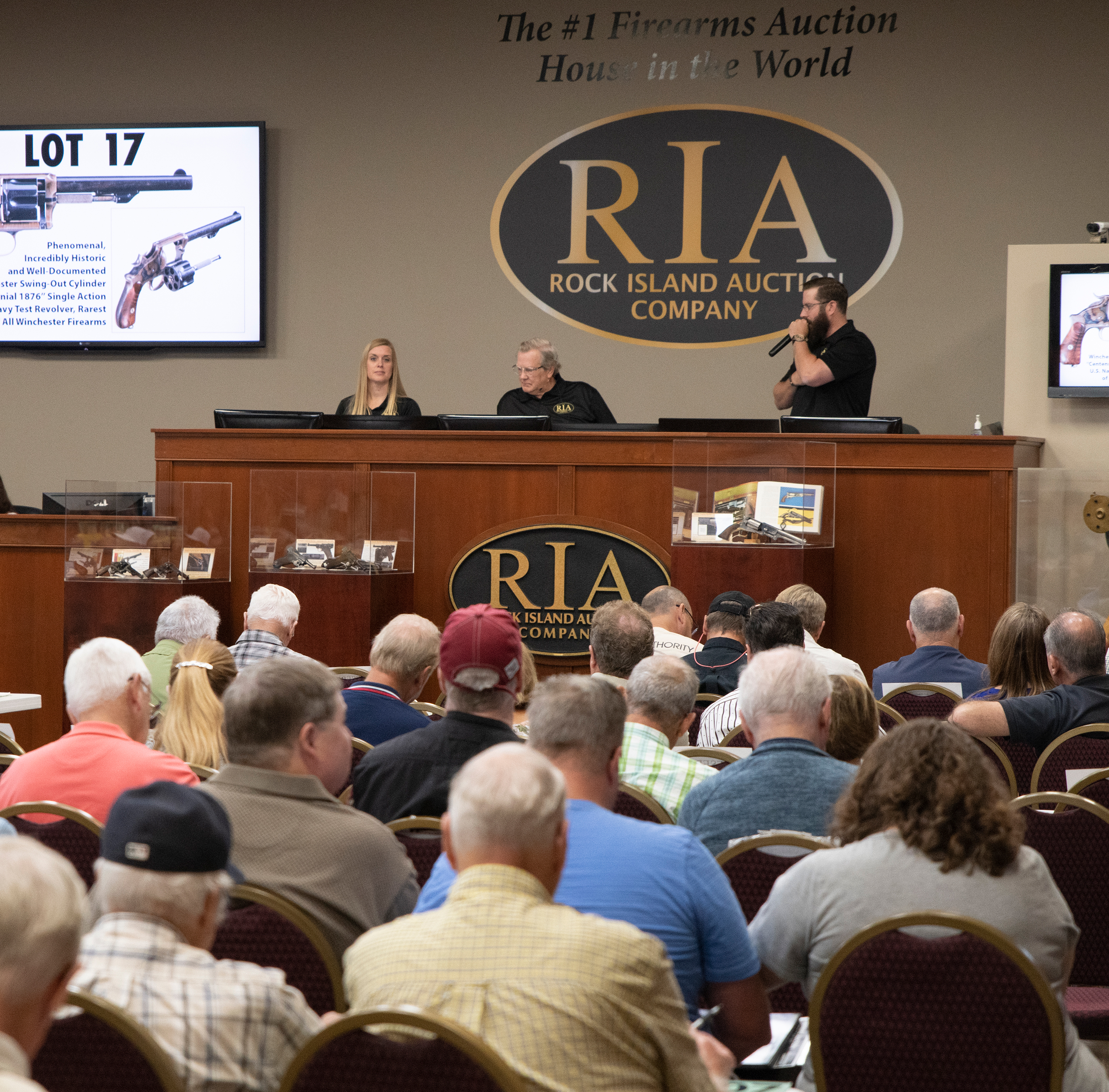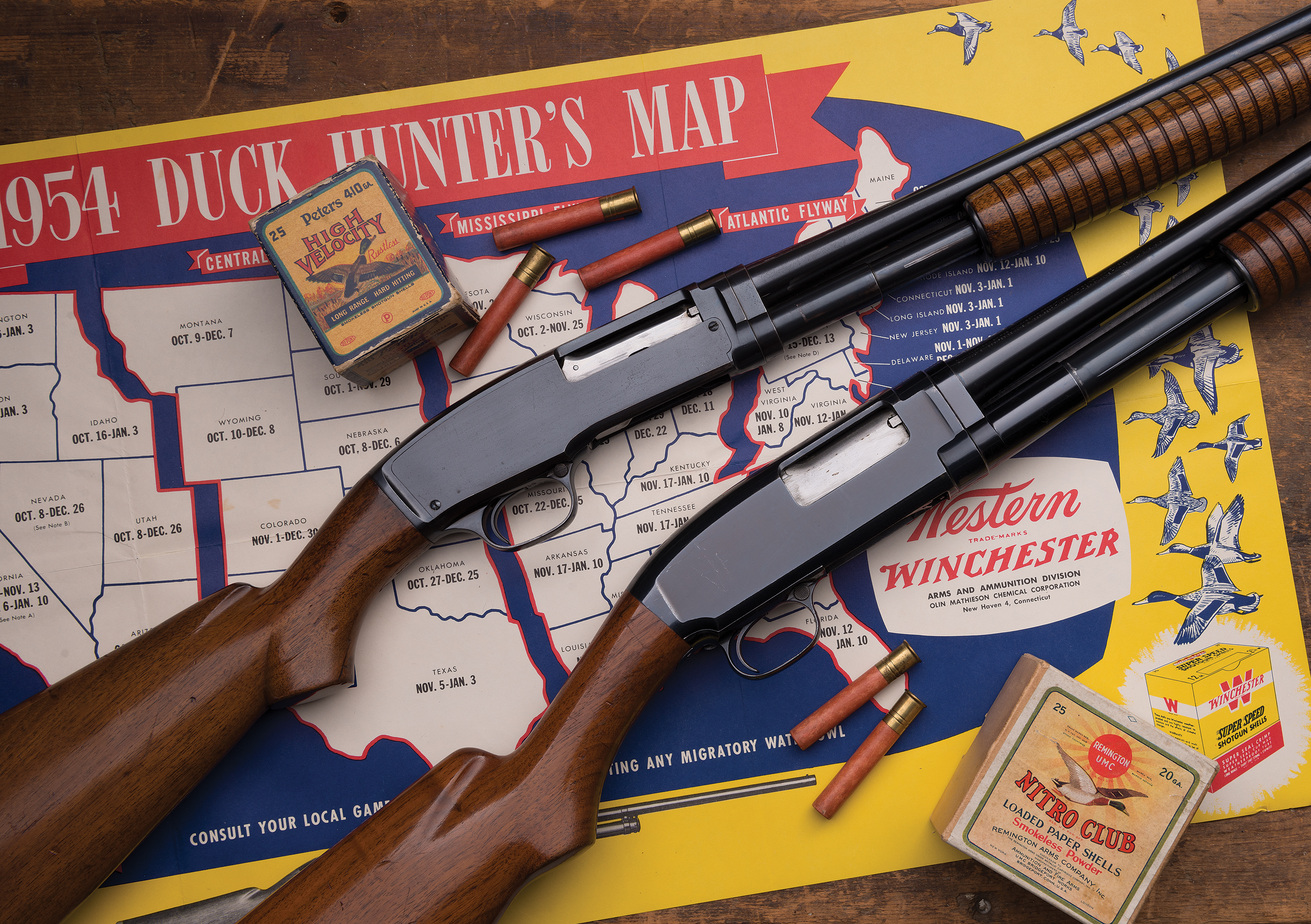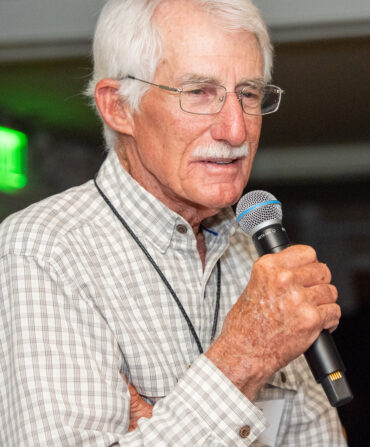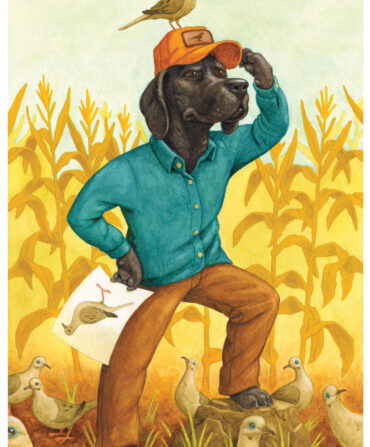James, an antique-firearms collector from Corpus Christi, Texas, peers down the barrel of a 1958 silver-and-gold-inlaid Winchester Model 12 with a Monte Carlo stock. We’re making a last-minute pass through the gun-filled preview hall at the Rock Island Auction Company in Rock Island, Illinois. Bidding will soon commence on this, day one of a three-day rare and antique firearms auction, one of the top sales of its kind in the world. I’m here to see what all the excitement is about.
“I learned to appreciate guns from my uncle, a carver of stocks who lived in Austin,” says James, the gleam of nostalgia in his eye mirroring the glow of burled walnut. “My first gun was a Model 12,” though nothing as fine as the exhibition-quality gem now braced against his shoulder.
Like other auction-goers I’ve met so far, James started as a hunter, in his case shooting white-winged dove in the Rio Grande Valley near the border town of McAllen, Texas. He’s older now and his legs aren’t what they used to be, “but if you get out of the game, that’s when they put you under the grass,” he tells me. “Collecting firearms keeps me in the game. What first captivated me was the craftsmanship and beauty of the wood. I don’t buy guns as much for shooting as works of art.”
That’s music to the ears of Rock Island Auction Company president Kevin Hogan, who calls antique and rare firearms “the most underappreciated collectibles on the market.” The 31-year-old and his father, Patrick Hogan, who founded the auction company twenty-five years ago, are on a mission to educate a new generation of collectors about the beauty, craft, and history of investment-class firearms.

Photo: Courtesy of Rock Island Auction Company
Rock Island Auction Company president Kevin Hogan introduces an item in the auction hall.
RIAC holds five live auctions each year at its 150,000-square-foot campus, located a mile from the Mississippi River and eight miles south of Davenport, Iowa. This sale, one of three annual Premier Auctions—held in September, December, and May—showcases nearly 3,000 guns, along with some other odds and ends, from antique Bowie knives to a collection of Western spurs. Enthusiasts arrived early for the previous day’s pre-auction party—food, beer, live country-and-western music—and for the chance to don white gloves and handle the rare items. Around 600 people will show up over the course of the auction’s three days, with thousands more bidding online and by phone. Many haul dog-eared copies of the current auction catalog—haul because the three-volume, spiral-bound set weighs nearly ten pounds.
The guns are the main attraction, and Kevin Hogan serves as emcee. He’s brimming with excitement as he prepares to introduce lot #1 of more than 900 up for grabs on the first day. “We make it fun,” he says. “We’ve built a culture of collectors who mark our auction dates in their calendars. They come to Rock Island for the sense of community.”
Hogan introduces the first lot, an 1894 Marlin lever-action rifle, and he’s off to the races. The hall buzzes with bidders and staff members manning a bank of phones and computer screens. The thick-bearded Hogan closes each lot by belting out, “Last call, fair warning, last call and fair warning—SOLD to bidder number….” After twenty-five lots he hands the microphone like a relay baton to his father, one of five other auctioneers rotating in and out of the lineup, and he dashes on at a similar rate—around two lots per minute. They won’t stop for eight more hours.
The pace is dizzying, intensified by the occasional bidding war. Bids for a rare 1847 Walker Colt pistol skyrocket into the hundreds of thousands and are soon stair-stepping in $50,000 increments. The air in the room grows electric as the pauses between bids stretch to the breaking point. Several times in a row, just as Hogan announces, “Last call, fair warning,” a bidder raises his numbered green card, pushing the price ever higher until it tops out at an astounding $1,035,000 including fees.

Photo: Courtesy of Rock Island Auction Company
Two rare Winchester slide-action shotguns.
While there are other high-dollar highlights, including a century-old Winchester lever-action rifle originally owned by the author Zane Grey that brings $345,000, plenty of lots sell for a few thousand dollars. A bid of just over $2,800, for example, wins a beautiful 1925 Parker Bros. 12-gauge trap gun.
That night, at a post-auction steak dinner the Hogans host for a few dozen auction regulars, I meet a collector from Mississippi, who explains what draws him to antique firearms. “I grew up in Natchez, where I was surrounded by old buildings and antiques,” he says. “In a place like that, you almost can’t help but develop an interest in fine old things.” These guns, he says, steeped in history, tell the story of America.
Near the end of day two, James from Corpus waves me into a curtained room, where winning bidders get to handle their prizes before RIAC crates them up. He’s animated and smiling ear to ear.
“Did you have some luck?” I ask.
“I sure did!” he says. “Remember that Model 12 I was admiring? I got it for a lot less than I expected.”

Photo: Courtesy of Rock Island Auction Company
Engraving on a 1958 Winchester Model 12.
Though the shotgun is already packed for shipping, we look at the catalog photo—at the tobacco-brown stock and the high-relief engraving of a pointer flushing pheasant.
“This is why I collect,” James says. He’s still in the game.








